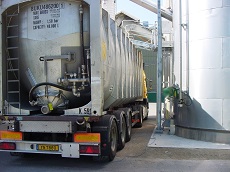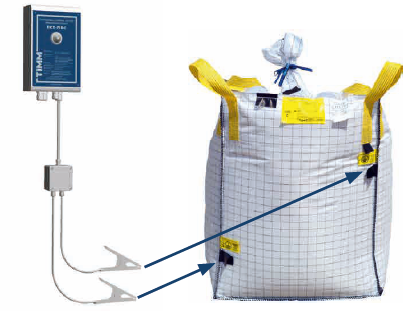
Ground monitoring
Electrostatic charge is invisible -
Electrical discharge is invisible either
This describes the problem entirely. And because this is the case, monitoring systems provide a remedy: The user can clearly see whether the connection to the equipotential bonding point has been established and dangerous electrostatic charges can therefore drain off.

Why grounding monitoring?
There are various scenarios in which equipotential bonding does not take place, resulting in high charging. The discharge resulting from this charging (spark) can be a potential source of ignition.
-
Grounding cable is "forgotten", not used for convenience, or not available. The object remains unearthed and can recharge.
-
Grounding cable is used, but wrong. The object remains unearthed and can recharge.
-
Grounding cable is used, but the wire conductor is defective - not visible from the outside - because e.g. a forklift has run over it. The object remains unearthed and can recharge. In fact, this is the reason why cables without insulation are often used. Damages are immediately noticeable.
Ground monitoring can do even more
It can ensure that the correct object is connected. And only when everything is "safe" does the earth monitoring release the subsequent charge-generating processes. For this purpose, the system provides various interfaces so that it can be easily integrated into any plant control system.
Tip:
Many industrial insurers reward investments in safety with particularly favourable premiums! Ask your agent!
 What should you ground?
What should you ground?
Everything! Permanently installed systems are unproblematic; they are permanently connected to equipotential bonding. Mobile containers such as drums, IBCs, tanks or FIBCs (BigBags) are more difficult. These can also be dangerously charged, especially during loading and unloading, i.e. the processes during which an explosive atmosphere can also occur.
Our EKX-FIBC earthing monitoring system offers the greatest possible safety for the monitored earthing of conductive FIBC (BigBags Type C according to IEC EN 61340-4-4).





